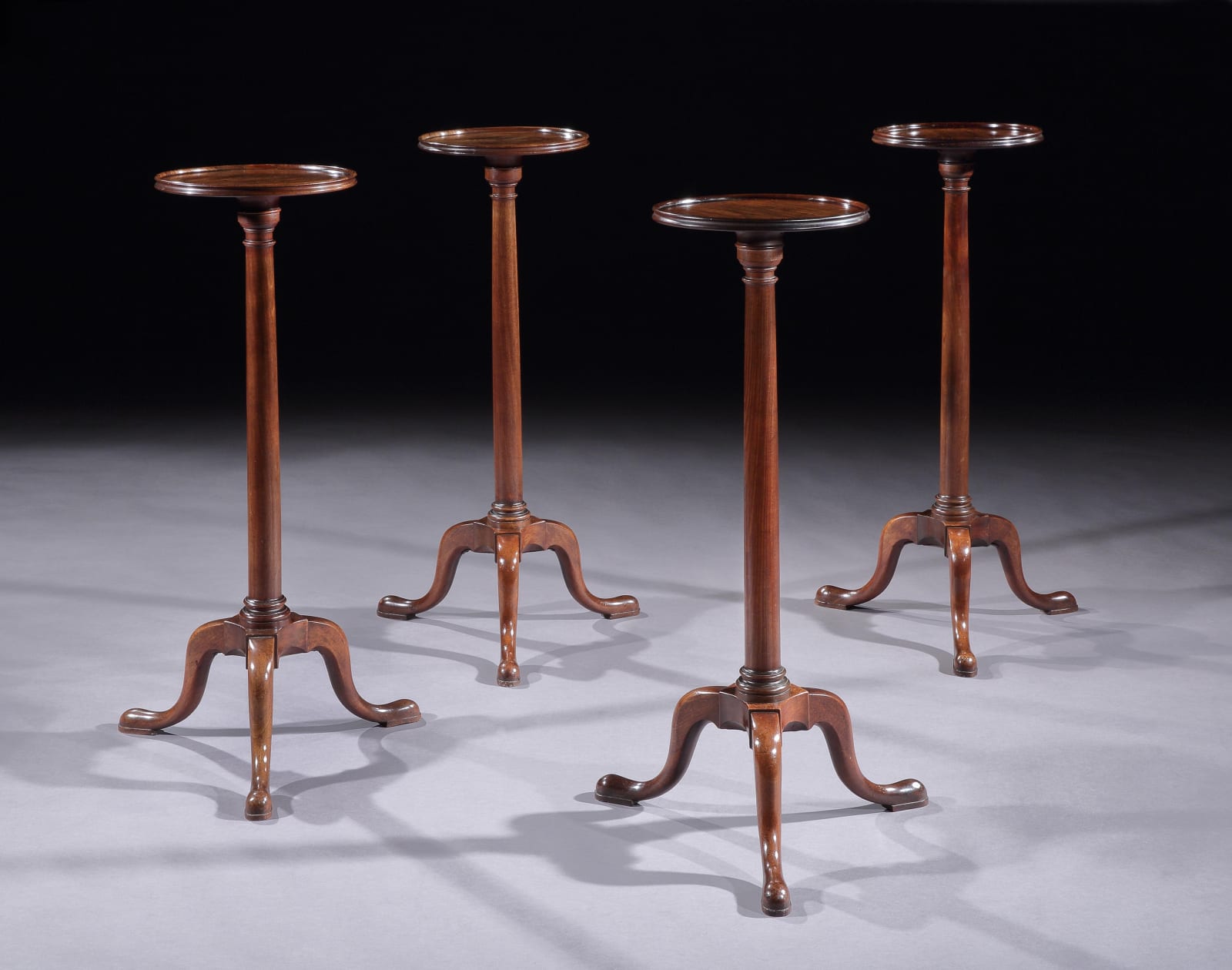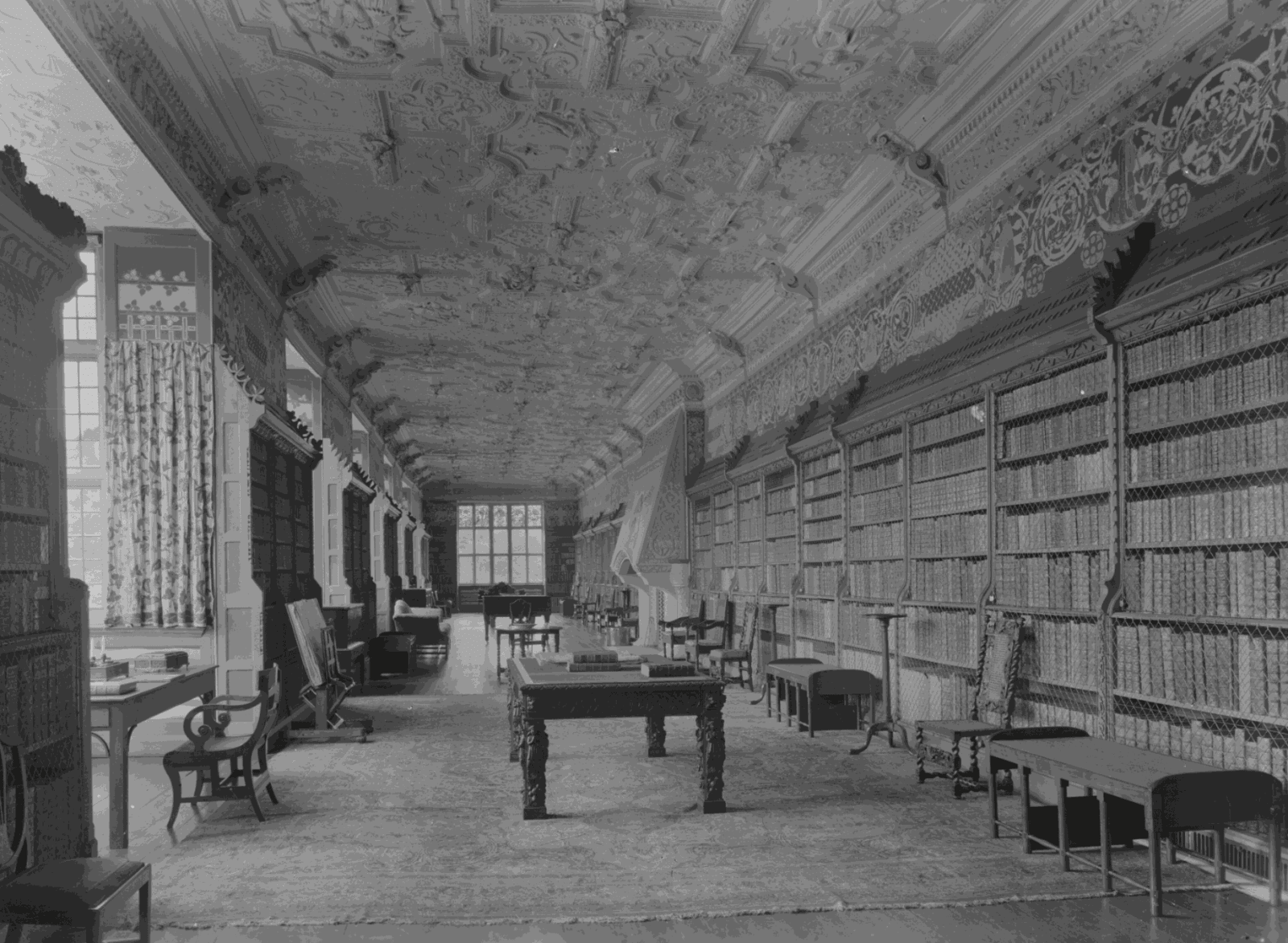THE BLICKLING HALL TORCHÈRES
Diameter: 22” / 55.9cm
Provenance
Supplied to Sir John Hobart, 1st Earl of Buckinghamshire (1693 - 1756) for the Long Gallery at Blickling Hall, Norfolk
By descent to Harriet Hobart upon whose marriage to William Kerr, 6th Marquess of Lothian (1763 - 1824) the torchères entered the Lothian collection
By descent in the collection of the Marquesses of Lothian
Publications
‘Blickling Hall, Norfolk – II’, Country Life, 21st June 1903, p. 907, fig. 11
‘Blickling Hall, Norfolk’, Country Life, 9th December 1905, p. 828
John Maddison, ‘Blickling Hall, Norfolk – I, , Country Life, 17th March 1988, p. 107, fig. 7
Elizabeth Griffiths et al., Blickling Hall, The National Trust, 1987, p. 46
A superb set of four George II mahogany torchères, the figured circular dished tops above turned stems on tripod bases terminating in pad feet
Predominantly found as single examples or in pairs, a set of four mahogany torchères is rare. The classic, refined form of the present examples exhibits the quality of the mahogany used in their construction.
The torchères were made for Sir John Hobart, 1st Earl of Buckinghamshire to hold candelabra to light the Long Gallery at Blickling, converted by him in the 1740s to house the famous library. The torchères were many times photographed in situ in Country Life articles about the house.
The present Jacobean mansion was built by Sir Henry Hobart, Lord Chief Justice to James I, after he bought the estate in 1616. There has, however, been a residence on the site of the Hall since at least the late fourteenth century, and in the sixteenth the Todor manor was the birthplace of Anne Boleyn.
When the stands were discovered in the attics of Monteviot House, the residence of the Marquess of Lothian, to whose family Blickling passed in the nineteenth century, two of the present set were still in their packaging dating to their removal from Blickling in the early twentieth century.



